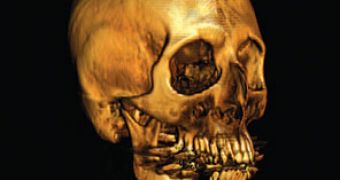A new imaging technology can produce accurate images of a beating heart, of forces inside a molecule and even of turbulences surrounding the fuselage of an airplane. The novelty is the fact that all of these things can now be felt, instead of only seen.
Computed tomography (CT), originally known as computed axial tomography (CAT or CT scan) and body section roentgenography, is a medical imaging method employing tomography where digital geometry processing is used to generate a three-dimensional image of the internals of an object from a large series of two-dimensional X-ray images taken around a single axis of rotation.
Multi-slice computer tomography (CT) with three-dimensional (3D) reconstruction applications confers excellent images of congenital malformations for both cardiologist and cardiothoracic surgeons alike, thanks to the large volume of data they provide.
A new method of transforming volume data using the sense of touch-a branch of science - often called haptics - has been developed by Karljohan Lundin Palmerius at the Division for Visual Information Technology and Applications, Link?ping University, Sweden.
A new series of computational algorithms allows the user to perceive the images in a natural way using a sort of touch tool. This tool contains miniature electric motors that provide feedback to the hand.
"Different equations are needed for different applications. I am the first researcher to present the dynamic events of a beating heart in a real patient," says Karljohan Lundin Palmerius.
The researcher didn't stop at feeling the image of a beating heart. He received funding to create a virtual wind tunnel where the constructor can feel how the airstreams move around the fuselage, from the Swedish airplane manufacturer SAAB.
Besides industrial areas, the new imaging technique can have various applications in medicine, where it could be used as a starting point for complex diagnosis and could even be used by doctors who want to practice an upcoming surgery on a virtual patient.

 14 DAY TRIAL //
14 DAY TRIAL //